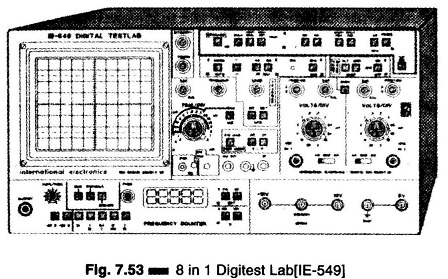Fibre Optic CRT Recording Oscilloscope:
Fibre Optic CRT Recording Oscilloscope – The familiar CRT oscilloscope has an extremely HF response, but permanent records, normally photography of the screen, cannot be taken, since they are time limited to one sweep.
By combining a special fibre optic CRT with an oscillograph type paper drive (which passes the paper over the CRT face, where it is exposed by light from the CRT phosphor), a recording oscilloscope with uniquely useful characteristics is obtained. If the paper is held still, conventional CRO operation allows single sweep, i.e. amplitude versus time and X-Y recording of signals from dc to 1 MHz, much like the use of standard camera recording techniques, except that ordinary direct print oscillograph paper is used.
By employing a CRT sweep and simultaneous paper drive (speeds up to about 100 in/s can be selected), the 1 MHz frequency response is retained. Additionally, we can now get as many records as we wish, because they are simply stacked one above the other on the recording paper. This technique gives an equivalent paper speed of 40,000 in/s.
Time skew, resulting from paper motion during a single CRT sweep, is corrected electronically, but there will be small gaps in the data between sweep because of the CRT sweep retrace time.
Since the CRT allows beam intensity (z-axis) modulation, the instrument can produce grey-scale pictures, such as video images.
A multichannel version utilizes sampling techniques to obtain direct current to 5 kHz response for up to 18 channels of data.
Digitest Lab:
The Digitest Lab (IE-549) shown in Fig. 7.53 has the following features,
- 25 MHz Dual Trace Oscilloscope with rectangular CRT
- Digital Storage Oscilloscope-5 Mega-samples/second Sampling Rate
- Frequency Counter-70 MHz : will read internal, external and function generator frequency
- 100 kHz Function Generator—Sine, Square, Triangular
- Power Supply : + 12, – 12 V/0.2 A and 5 V/1 A
- Component Tester: Test capacitors, Resistors, Diodes, etc.
- Continuity Tester: Test for breaks/shorts in PCB tracks and cable harnesses.
- Curve Tracer: Test semiconductors like Transistors, FET’ s, Diodes, etc. You can check for selected parameters and obtain matched pairs of devices for production and service.

